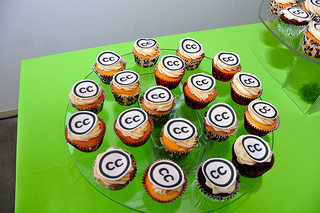Elements of an Image Caption
The practice of image caption formatting changes depending on context, discipline, citation style, and publication. Is this a paper for class, or a public website?
The purposes of an image caption are to:
- Give credit to the creator: Someone put work into the production of this image and they deserve recognition!
- Provide basic identification or description of the image
- Help other people find this image again
- Clarify the permissions or rights under which you are using the image
Due diligence
Before you decide to use the image, make sure you have done the following:
- Know who the creator is. Because other people have not captioned their images well does not give you license to do so as well. Dig to find who created the image.
- Dig to find the original. It is easy to discover images on social media, but usually those images were originally posted elsewhere. Do not settle for the most convenient location. Look for the most stable and authoritative original version. See the resources on this page for help.
- Determine whether you have the right to redistribute the image in this way. Remember that fair use does not extend to redistribution outside the classroom. If the image is copyrighted, ask for permission. If the image is license free, make sure. If the image is yours, say so. If the image is CC-licensed, you have less to worry about.
Include a rights statement in the caption
Some examples...
- "Used with permission" - in the case of a copyrighted image where you have contacted the creator
- Text of the Creative Commons license - copy the language directly (ex. CC BY-SA, or CC BY 4.0 DEED Attribution 4.0 International, etc.)
- "Public domain" - when you have determined the image is not under copyright or licensed
- "Original photo" or "Author photo" - when you are the creator of the image
- **If the image is Copyrighted or Licensed, you can't reuse it on a public website or document without author permission.
An Example

The adorable face of a hedgehog. Image source: Mark Fletcher, "Hedgehog," 2009. Accessed via https://www.flickr.com/photos/fletchthemonkey/3807893972. CC BY-NC 2.0.
-
Chicago Manual of Style: Placement of credit lines3.31: Placement of credit lines. How to format a caption that has content and a citation in it.
Captioning Creative Commons Media (TASL)
-
Captioning Creative Commons Images and MediaWhen you caption Creative Commons media (including images), you should include 4 major parts (TASL). You may need to modify the order or add more information based on the citation style you are using.
Title: What is the name of the work?
Author: Who allows you to use the work?
Source: Where can people find the work?
License: How can you use the work?
Example:

"Creative Commons 10th Birthday Celebration San Francisco" by Timothy Vollmer is licensed under CC BY 4.0
Find the Original Image
-
TinEye Reverse Image SearchFind all the other places online where this image has been posted. Great way to find the original source.
-
Google Images - Search by ImageClick the camera icon in the search box and search by the image you have in hand (either by URL or by dragging in). Like TinEye, it finds other places online where the image has been posted.
Check the source's "Terms of Use," Image Credits," or "Image Permissions" section to make sure you know whether the image is under license or copyright or other terms of use.
Resources for Learning More about Image Captions
-
Adding Photo Credits to Talk Slides (blog post)A helpful overview of writing image captions for presentations with many good tips. By Colin Purrington, photographer and former professor at Swarthmore.
-
Harder to Find Than Nemo: The Elusive Image Citation Standard (journal article)An article about the inconsistencies in the current standards for citing and captioning images. By Jennifer Yao Weinraub.

